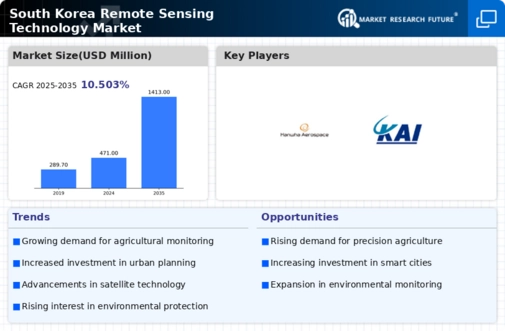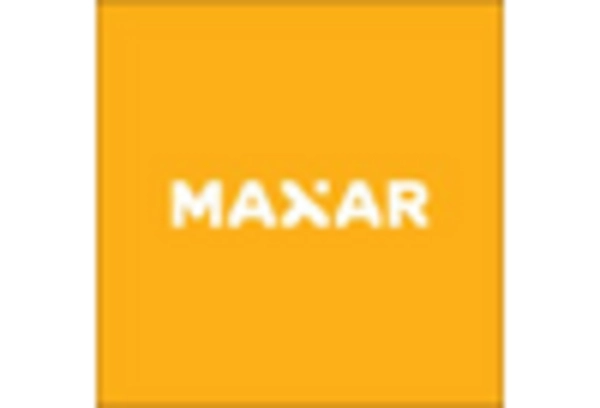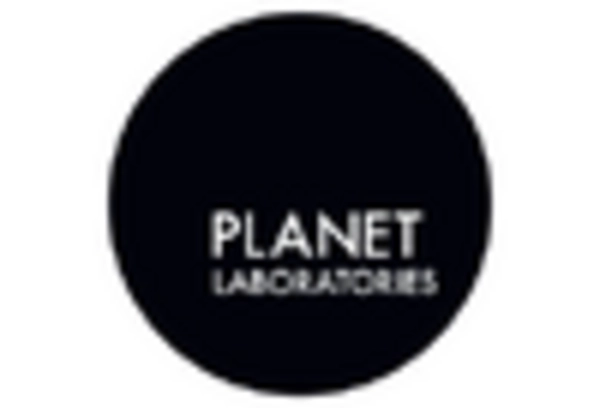Advancements in Sensor Technology
The remote sensing-technology market is experiencing a surge in advancements in sensor technology, which enhances data collection capabilities. Innovations in multispectral and hyperspectral sensors allow for more detailed analysis of land use, vegetation health, and urban development. In South Korea, the integration of these advanced sensors into satellite systems is expected to improve the accuracy of environmental monitoring. The government has allocated approximately $200 million for research and development in this area, indicating a strong commitment to enhancing the capabilities of remote sensing technologies. This investment is likely to drive growth in the remote sensing-technology market, as more precise data becomes available for various applications, including agriculture, forestry, and disaster management.
Expansion of Agricultural Applications
The remote sensing-technology market is significantly influenced by the expansion of agricultural applications in South Korea. Farmers are increasingly adopting remote sensing technologies to optimize crop yields and manage resources more efficiently. The use of satellite imagery and aerial data allows for precise monitoring of crop health, soil conditions, and irrigation needs. According to recent studies, the adoption of these technologies can lead to yield increases of up to 20%. The South Korean government supports this trend by providing subsidies for farmers to access remote sensing tools, thereby fostering growth in the remote sensing-technology market. This agricultural focus is likely to continue driving innovation and investment in the sector.
Urban Planning and Smart City Initiatives
The remote sensing-technology market is being propelled by urban planning and smart city initiatives in South Korea. As cities expand, there is a growing need for effective urban management solutions that utilize remote sensing data. Technologies such as satellite imagery and aerial surveys are being employed to analyze urban growth patterns, traffic congestion, and infrastructure development. The South Korean government has committed over $150 million to smart city projects that leverage remote sensing technologies for better urban planning. This investment is expected to enhance the efficiency of city services and improve the quality of life for residents, thereby driving demand in the remote sensing-technology market.
Growing Demand for Environmental Monitoring
The remote sensing-technology market is witnessing a growing demand for environmental monitoring solutions, particularly in South Korea. With increasing concerns about climate change and urbanization, there is a pressing need for accurate data on air quality, water resources, and land use changes. The South Korean government has initiated several programs aimed at utilizing remote sensing technologies to monitor environmental conditions. For instance, the National Institute of Environmental Research has reported that satellite data is crucial for tracking pollution levels, which has led to a projected market growth of 15% annually in this sector. This trend underscores the importance of remote sensing technologies in addressing environmental challenges.
Increased Collaboration Between Public and Private Sectors
The remote sensing-technology market is benefiting from increased collaboration between public and private sectors in South Korea. Partnerships between government agencies and private companies are fostering innovation and accelerating the development of new technologies. For instance, joint ventures are emerging to create advanced satellite systems and data analytics platforms. This collaborative approach is likely to enhance the capabilities of remote sensing technologies, making them more accessible to various industries. The South Korean government has recognized the potential of these partnerships, allocating funds to support collaborative projects. This trend is expected to stimulate growth in the remote sensing-technology market, as new solutions are developed to meet diverse needs.

















Leave a Comment